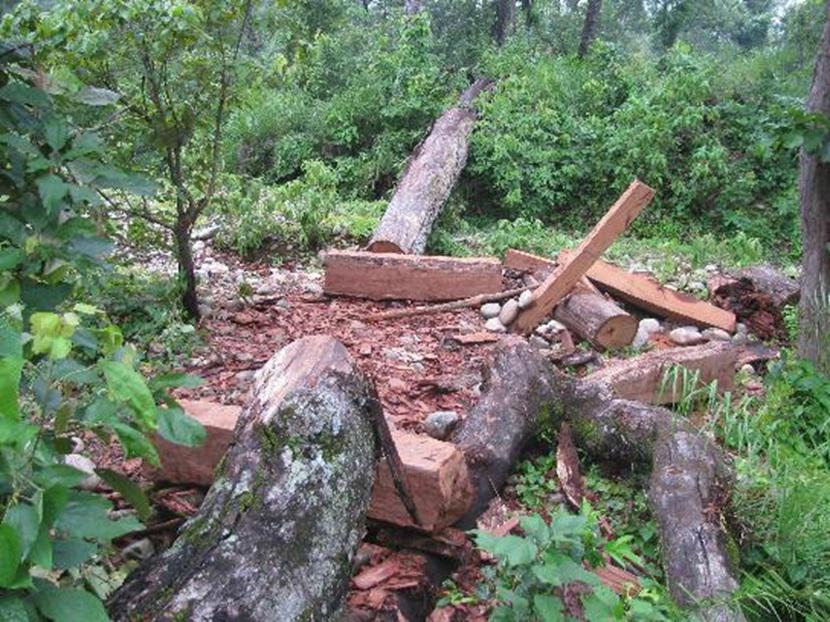Social media video featuring the project.
Community Member Showing the Movement of Tigers
15 Jun 2010 Banke National Park, Nepal, Indian Sub-continent Mammals
Buffer Zone Community Perception, Attitude and Belief towards Newly Establish Protected Area: A Case Study from Banke National Park
This project aims to assess the status of big cats in the Banke National Park.

Illegal clear felling of the trees inside the national park. © Banke National Park
Government of Nepal has declared an extension area in east part of Bardia National Park as a new national park and officially designated it as “Banke National Park”. The new areas are contiguous forest habitat which is considered critical corridor for the big cats (tiger and leopard). This project aims to assess the status of big cats in the new extension areas of Bardia National Park (Officially called as Banke National Park). We will also use occupancy estimation methods (based on local, biologist and park authority expertise) and conduct opportunistic camera trap surveys to meet our aim. We are trying to use a new approach to incorporate local expertise and knowledge in getting quantitative information on detection and non detection of big cats across Banke National Park. This will be verified with actual field survey and in interviews with park authorities and biologist. Our opportunistic camera trap survey will yield visual evidence on types of big cats including small animals present in the areas. Project tends to achieve other vital information on habitat characteristics, presence of other wildlife, level of threats and disturbance in the extension areas.
Project will use collected information in raising awareness among the local community surrounding national park that have no prior knowledge about protected areas management and value of big cats. Information will be shared with local people regarding value of biodiversity and big cats through awareness campaigns with the help of local eco-club network. Project shares biodiversity information at the local level and provides baseline data to the park management. At the long run, Government successful landscape level program like Terai Arc Landscape (TAL) and its goal to maintain at-least 550 tigers is only possible if more potential tiger habitats outside the existing protected areas are brought under conservation status and managed properly following management plans based on information on current status of their population and habitats. The proposed study will thus contribute toward overall goal of TAL as well.
Social media video featuring the project.
Community Member Showing the Movement of Tigers